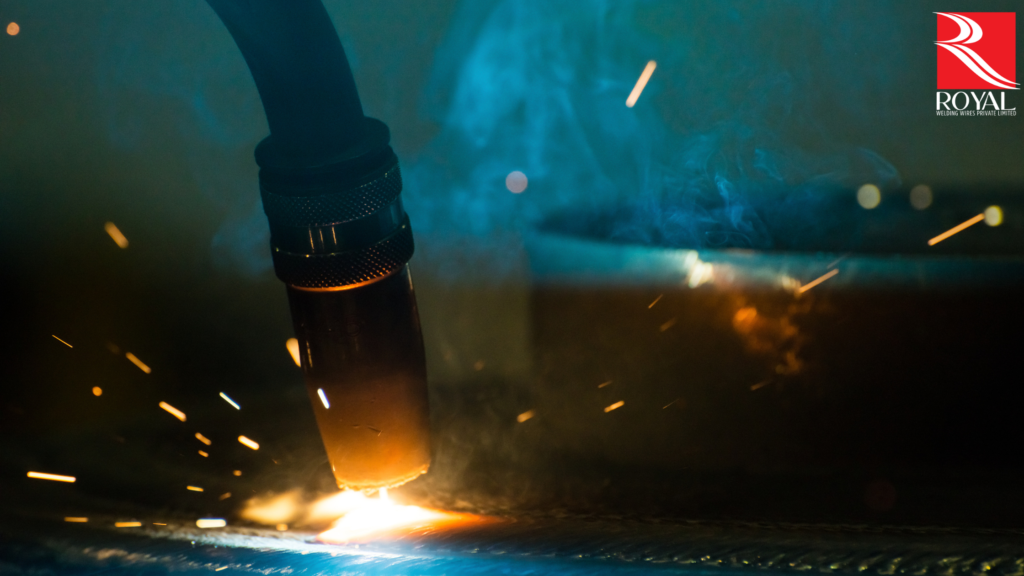This article discusses whether Corten steel can be welded to mild steel. Welding is essential in joining metals to create structures and components.
Corten steel is known for its weathering properties, while mild steel is commonly used in various applications. We’ll explore the challenges and techniques of welding these two metals together.
Properties of Corten Steel and Mild Steel
Corten steel and mild steel are commonly used in the construction industry. Corten steel is a weathering steel often used in construction due to its corrosion-resistant properties.
When exposed to the environment, it forms a protective layer of rust that prevents further oxidation. On the other hand, Mild steel is a low-carbon steel that is more ductile and can be welded easily.
It is also relatively cost-effective compared to other steel alloys. While mild steel can be welded to other steels, it is not recommended to weld corten steel to mild steel as the high carbon content in the mild steel can lead to cracking when exposed to the elements.
Can you weld corten steel to mild steel?
Yes, it is possible to weld corten steel to mild steel, but it requires careful attention to detail to ensure a strong and durable weld. Welders should use specialized welding techniques and filler materials, such as an E7018 electrode, to achieve the desired results.
Using the proper welding techniques, skilled welders can create a strong and long-lasting weld between corten steel and mild steel.
Looking for expert welding advice? Find out how to weld Corten steel to mild steel with ease and confidence! Contact us now to speak with a welding specialist and get your project started. Don’t miss out on this opportunity to get the best welding services and achieve superior results. Call us today and take the first step towards success!
Techniques for Welding Corten Steel to Mild Steel
Here’s a list of 5 welding techniques for joining Corten steel to mild steel, with explanations of each method and their pros and cons:
MIG Welding
MIG welding, also known as Gas Metal Arc Welding (GMAW), is a popular technique for welding Corten steel to mild steel. It uses a consumable wire electrode and a shielding gas to protect the weld from atmospheric contamination.
This technique is suitable for welding thin metal sections and is a popular choice for decorative metalwork.
Pros: Fast and efficient, suitable for thin metal sections, produces a clean and consistent weld.
Cons: Requires a shielding gas, not suitable for thicker sections of metal.
TIG Welding
TIG welding, also known as Gas Tungsten Arc Welding (GTAW), is a high-quality welding technique that combines Corten steel with mild steel. It uses a non-consumable tungsten electrode and a shielding gas to protect the weld from atmospheric contamination.
This technique is suitable for welding thick metal sections and producing high-quality welds.
Pros: Suitable for thick sections of metal, produces high-quality welds.
Cons: Requires a high level of skill and experience, slower than other welding techniques.
Stick Welding
Stick welding, also known as Shielded Metal Arc Welding (SMAW), is a versatile welding technique that can join Corten steel to mild steel. It uses a consumable electrode coated in flux to create the weld. This technique is versatile and can be used to weld thicker metal sections.
Pros: Versatile, can be used for thicker sections of metal.
Cons: Produces slag and requires more clean-up after welding.
Flux-Cored Arc Welding
Flux-Cored Arc Welding (FCAW) is a technique that uses a hollow wire electrode filled with flux to create the weld. This technique is suitable for welding in outdoor environments and can join Corten steel to mild steel.
Pros: It is suitable for outdoor welding and can be used for thicker metal sections.
Cons: Requires more clean-up after welding, produces slag.
Plasma Arc Welding
Plasma Arc Welding (PAW) is a precision welding technique that uses a plasma arc to create the weld. This technique produces high-quality welds and can join Corten steel to mild steel.
Pros: Produces high-quality welds suitable for thin sections of metal.
Cons: Requires specialized equipment, expensive.

Conclusion
In conclusion, welding Corten steel to mild steel can be welded using the appropriate welding procedures and filler metals.
However, it is essential to ensure that the joint is designed to allow for the different properties of the two materials and to consider the potential for accelerated corrosion at the joint. It is recommended to consult with a welding expert or engineer to determine the best approach for your specific application.
